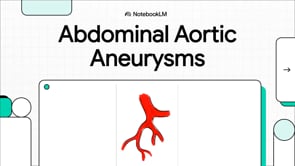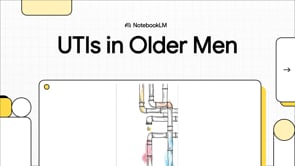Patients with acute uncomplicated appendicitis now have two safe treatment options: immediate surgery (appendectomy) or initial antibiotic therapy. Major studies involving over 4,000 patients show that approximately 60-70% of those treated with antibiotics avoid surgery initially, though 30-40% may eventually need appendectomy within 5 years. Antibiotic treatment results in fewer disability days (4-7 days vs 7-19 days) and similar quality of life compared to surgery, while appendectomy provides definitive treatment with a very low mortality rate (0.05%). The presence of an appendicolith (found in 25% of cases) increases the likelihood of needing surgery after antibiotic treatment.
Understanding Your Options for Acute Uncomplicated Appendicitis Treatment
Table of Contents
- Introduction: What is Acute Uncomplicated Appendicitis?
- Treatment Options: Surgery vs Antibiotics
- Key Research Studies and Findings
- Treatment Success Rates and Outcomes
- Potential Complications and Risks
- Recovery and Quality of Life Comparison
- Shared Decision Making: Choosing Your Treatment
- Treatment Details: What to Expect
- Study Limitations and Considerations
- Patient Recommendations and Next Steps
- Source Information
Introduction: What is Acute Uncomplicated Appendicitis?
Acute appendicitis is the most common reason for emergency abdominal surgery, affecting people of all ages with a lifetime risk of 7-8%. The peak incidence occurs between ages 10-19. Uncomplicated appendicitis refers to localized inflammation without rupture, abscess, or widespread infection, representing approximately 80% of all appendicitis cases.
Traditionally, appendicitis was treated exclusively with urgent surgery (appendectomy). However, over the past three decades, numerous clinical trials have demonstrated that treatment with antibiotics alone can be a safe first strategy for appropriate candidates. This article explains both treatment options based on the latest medical research to help patients make informed decisions about their care.
Treatment Options: Surgery vs Antibiotics
Patients with confirmed uncomplicated appendicitis now have two evidence-based treatment approaches:
- Appendectomy (surgery): Removal of the appendix through either open surgery or laparoscopic (minimally invasive) procedure
- Nonoperative treatment: Initial management with antibiotics, pain control, and careful monitoring, with surgery reserved for those who don't respond or experience recurrence
Appendectomy requires general anesthesia and typically involves hospitalization, though outpatient surgery is possible in some cases. In the United States and Europe, most appendectomies are performed laparoscopically, which is associated with fewer wound infections and faster recovery compared to open surgery, though it may be more costly.
Nonoperative treatment includes antibiotics for 7-10 days, pain management, and careful follow-up. This approach doesn't routinely require hospitalization and is not associated with an increased risk of appendix rupture when properly monitored.
Key Research Studies and Findings
The evidence supporting both treatment options comes from extensive research involving over 4,000 patients across multiple studies. Three major investigations form the core of our understanding:
- APPAC Trial (Finland): A randomized controlled trial with 530 adult participants followed for 5 years
- CODA Trial (United States): A randomized controlled trial with 1,552 adult participants reporting outcomes at 90 days
- MWPSC Study (Pediatric): The largest pediatric trial involving 1,068 children ages 7-17 across 10 children's hospitals with 1-year outcomes
These studies used imaging (CT scans for adults, ultrasound for children) to confirm uncomplicated appendicitis diagnosis before treatment. Most studies excluded patients with appendicolith (a calcified deposit found in approximately 25% of appendicitis cases), though the CODA trial included patients with this condition.
Treatment Success Rates and Outcomes
The likelihood of avoiding surgery with antibiotic treatment varies based on patient characteristics and follow-up duration:
- APPAC Trial: 94% of patients improved during initial hospitalization with antibiotics, but 27% underwent appendectomy within 1 year
- MWPSC Study (children): 86% initial response rate with antibiotics, with 33% undergoing appendectomy at 1 year
- CODA Trial: Patients without appendicolith had a 92% initial response rate, while those with appendicolith had a 78% response rate
At 90 days in the CODA trial, appendectomy rates were 25% for patients without appendicolith and 41% for those with appendicolith. Long-term data shows that approximately 30-40% of patients treated with antibiotics will eventually undergo appendectomy within 5 years, usually within the first 1-2 years.
The 30-day mortality rate for appendectomy in uncomplicated appendicitis is extremely low at approximately 0.5 per 1,000 patients (0.05%), though this rate is about twice as high among elderly patients compared to adolescents.
Potential Complications and Risks
Both treatment approaches carry different risk profiles:
For antibiotic treatment, patients with appendicolith have higher complication rates. In the CODA trial, patients with appendicolith who received antibiotics had a 14% rate of complications meeting the National Surgical Quality Improvement Program criteria (such as abscesses of any size) compared to 3% in the surgery group. However, the incidence of serious adverse events was similar (6% vs 4%).
No participant deaths occurred in any of the three major studies. Importantly, research shows that delaying surgery while taking antibiotics does not increase the risk of perforation. In fact, the CODA trial found that patients without appendicolith actually had lower perforation rates with antibiotic treatment compared to surgery.
There is a very small risk (0.9% in one study of 21,069 specimens) that cancer might be found during appendectomy, though this risk is lower in patients under 50 years old. In the APPAC trial, cancer was detected in 4 of 272 surgery patients (all at initial appendectomy) compared to none of the 260 antibiotic-treated patients at 5-year follow-up.
Recovery and Quality of Life Comparison
Recovery time differs significantly between the two approaches:
- Disability days: Antibiotic treatment resulted in significantly fewer days of disability - 7 days vs 19 days in the APPAC trial and 4 days vs 7 days in the MWPSC study
- CODA Trial: Patients receiving antibiotics had fewer mean days of disability at 90-day follow-up (5 days vs 8 days)
- Quality of life: All studies showed similar quality of life outcomes between both treatment groups using standardized assessment tools
Health care utilization patterns differ between approaches. In the CODA trial, antibiotic-treated patients had the same length of stay for their initial visit (mean 1.3 days) but more later hospitalizations and emergency department visits (24% vs 5% and 9% vs 5% respectively) over 90 days. In the MWPSC study, antibiotic-treated children had more later hospitalizations but fewer other emergency visits over 1 year.
Shared Decision Making: Choosing Your Treatment
The current medical approach emphasizes shared decision making, where patients and doctors discuss options based on individual circumstances and preferences. Doctors should present both options objectively without bias toward either approach.
Important factors to consider include:
- Your personal and family responsibilities (antibiotics might allow faster return to work/caregiving)
- Previous surgical experiences
- Schedule flexibility for possible follow-up care
- Travel plans (recurrence might occur away from home)
- Expected out-of-pocket expenses
- Personal tolerance for uncertainty vs definitive treatment
Patients should be reassured that they have time to consider options - the outdated notion that an inflamed appendix will inevitably burst without immediate surgery has been largely abandoned based on current evidence.
Treatment Details: What to Expect
Pain management should begin before final treatment decisions. Research shows that pain control does not lead to diagnostic inaccuracy. Nonsteroidal anti-inflammatory drugs (NSAIDs) are safe before appendectomy without increased bleeding risk and can reduce opioid needs.
Antibiotic regimens for nonoperative treatment should cover Gram-negative and anaerobic bacteria, typically including:
- Parenteral (IV) antibiotics initially, sometimes transitioning to oral medications
- Common regimens include metronidazole with an advanced-generation cephalosporin or fluoroquinolone
- Total treatment duration of 7-10 days
- Some patients may be treated with oral antibiotics only, though this approach hasn't been proven equivalent to IV/oral combination therapy
Recovery expectations differ between approaches. After laparoscopic appendectomy, most patients go home the next day and return to normal activities within 1-2 weeks, avoiding strenuous activity for 3-5 days. With antibiotic treatment, pain, fever, and other symptoms typically resolve within approximately 2 days, with about half of patients experiencing substantial symptom resolution within 24 hours.
Study Limitations and Considerations
While the evidence supporting both treatment approaches is robust, several limitations should be considered:
- Most studies excluded patients with certain risk factors (immunodeficiency, inflammatory bowel disease, pregnancy)
- Some trials excluded patients with symptoms lasting more than 48 hours, very high white blood cell counts, or large appendix diameter
- The CODA trial was the only major study that included patients with appendicolith
- Surgical techniques varied between studies (mostly open surgery in APPAC, mostly laparoscopic in CODA and MWPSC)
- Long-term data beyond 5 years is limited
Approximately 8% of adults with suspected appendicitis on CT scan are found to have a normal appendix during surgery. Additionally, as many as 20% of patients with uncomplicated appendicitis on CT are found to have appendiceal rupture or abscess during surgery.
Patient Recommendations and Next Steps
Based on the current evidence, patients with uncomplicated appendicitis should:
- Discuss both options thoroughly with your healthcare provider
- Consider your personal circumstances - work/family responsibilities, tolerance for uncertainty, and preferences
-
Be aware of factors that might make antibiotic treatment less successful:
- Presence of appendicolith (25% of cases)
- Age over 45 years
- Symptoms lasting more than 48 hours
- Fever or elevated inflammatory markers
- Extraluminal fluid or air on imaging
- Ensure adequate pain control regardless of treatment choice
- Commit to necessary follow-up, especially if choosing antibiotic treatment
- Seek immediate care if symptoms worsen or change regardless of treatment approach
Professional society guidelines from organizations like the American Association for the Surgery of Trauma (2018) and the National Institute for Health and Care Excellence (2019) now acknowledge that both surgery and nonoperative approaches are reasonable options for uncomplicated appendicitis.
Source Information
Original Article: "Treatment of Acute Uncomplicated Appendicitis" by David A. Talan, M.D., and Salomone Di Saverio, M.D., Ph.D.
Publication: The New England Journal of Medicine, September 16, 2021, Volume 385, Issue 12, Pages 1116-1123
DOI: 10.1056/NEJMcp2107675
This patient-friendly article is based on peer-reviewed research and aims to translate complex medical information into accessible content for educated patients. Always consult with your healthcare provider for personal medical advice.





